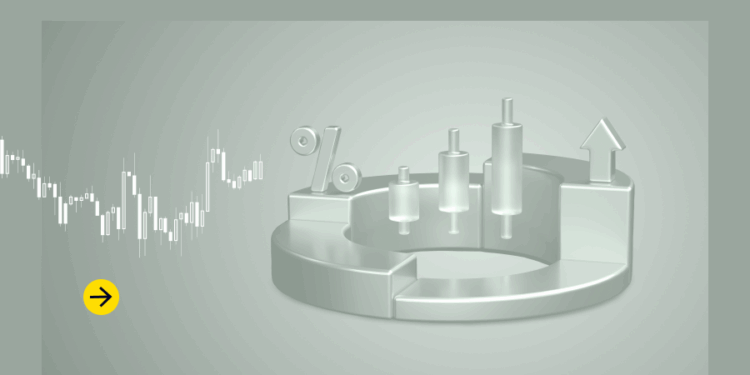In the world of foreign exchange, some people may be considered a “natural-born trader.“
This narrative suggests certain individuals possess an innate, almost precognitive, talent for trading the markets.
Although that might be true, beyond talent, you also need disciplined habits and the right outlook.
Building a trader’s mindset is the outcome of a set of actions, not just intuition. It is the product of a meticulously constructed daily routine, a disciplined mindset, and an unwavering commitment to a process that tames the destructive impulses of emotion.
The difference between the amateur and the professional is not defined by a secret strategy but by the architecture of their day. While the novice chases fleeting pips fueled by fear and greed, the professional operates within a structured framework, transforming the chaotic art of trading into a disciplined science. This framework begins long before the first trade is ever placed.
The pre-market ritual: Laying the foundation
The professional’s trading day begins in the quiet hours before the market’s opening bell. This period is not for idle speculation but for methodical preparation. The first order of business is a comprehensive review of overnight news and economic data releases.
This fundamental analysis sets the macroeconomic context, identifying potential catalysts that could drive currency movements throughout the day. It’s about understanding the “why” before a single chart is analyzed.
With the macro environment understood, the focus shifts inward to the trading plan. A trading plan is not a static document but a living guide that requires daily review and, if necessary, adjustment. This plan outlines specific entry and exit criteria, risk parameters, and the markets to be watched.
This daily reaffirmation of the rules serves as a crucial psychological anchor, a pre-commitment to rational decision-making before the emotional pressures of live trading take hold. Failing to plan is, unequivocally, planning to fail.
Chart analysis: From a bird’s-eye view to granular detail
With the foundational work complete, the technical analysis begins. Many successful traders adopt a “top-down” approach, starting with a high-level, weekly chart perspective. This “bird’s-eye view” helps to identify the market’s primary long-term trends, major support and resistance levels, and significant turning points. By marking these key levels on the weekly chart first, the trader establishes a broad structural map, preventing them from focusing solely on short-term price movements.
Next, the analysis focuses on the daily chart. Here, the key levels identified on the weekly chart may be refined, and new, more immediate levels are drawn. The objective is to understand the near-term market conditions. Is the market trending with a series of higher highs and higher lows, or is it consolidating sideways? Tools like the 21-day exponential moving average (EMA) can be employed to gauge near-term momentum and dynamic support or resistance.
The final step in this analytical process is the search for high-probability trade setups. This is where price action becomes paramount. The professional is not looking for just any signal, but for “clean and obvious” signals that have confluence, meaning multiple, independent factors align to support the trade idea.
For example, a clear bullish pin bar pattern forming at a key horizontal support level that also coincides with the 21 EMA in an established uptrend is a far more robust signal than one that appears in isolation. This patient, methodical search for quality over quantity is a hallmark of professional trading. It’s about waiting for the market to present a clear opportunity, rather than forcing a trade out of impatience.
The main course: Execution, risk, and emotional fortitude
Once the markets are open, the meticulously laid plans are put to the test. This is where trading psychology and emotional intelligence become the primary determinants of success. The two most powerful and destructive emotions in trading are fear and greed.
Fear, particularly the “fear of missing out” (FOMO), can drive a trader to jump into an unvetted setup, abandoning their plan in a chase for quick profits. Greed can lead to over-trading or risking too much capital on a single position, jeopardizing long-term survival for short-term gratification.
Successful traders combat these impulses through unwavering discipline. They execute their plan with precision, taking only the trades that meet their pre-defined criteria. They adhere strictly to their risk management rules, setting stop-losses to define their maximum acceptable loss on any given trade and knowing when to cut a losing position without emotional attachment. This isn’t about being right or wrong; it’s a business decision designed to preserve capital.
Equally important is avoiding psychological traps like revenge trading, the reckless attempt to win back money immediately after a loss, or confirmation bias, where one only seeks out information that validates an existing position. Building the resilience to accept losses as a normal part of the business and the self-awareness to recognize cognitive biases are critical skills cultivated through experience and introspection.
The follow-up: Journaling and continuous improvement
The trading day doesn’t end when the last position is closed. The final, and perhaps most crucial, part of the professional’s routine is the end-of-day review and journaling. A trading journal is far more than a simple log of wins and losses; it is a tool for deep self-analysis.
It should capture not only the technical details of each trade, the entry, exit, and outcome, but also the psychological context. What was your emotional state when you entered the trade? Did you follow your plan? If not, why?
This process of detailed record-keeping allows the trader to identify patterns, not just in the market, but in their behaviour. It illuminates strengths to be built upon and weaknesses to be corrected. This commitment to continuous learning and self-improvement is non-negotiable. The market is a dynamic, constantly evolving entity; the trader who stops learning is the trader who will eventually fail.
Ultimately, the path to sustained success in trading is paved with the bricks of daily habits. It is a marathon of discipline, not a sprint of luck. By architecting a structured routine that encompasses rigorous preparation, patient analysis, disciplined execution, and reflective review, a trader can build the psychological fortitude required to navigate the markets with clarity and confidence. The winning mindset is not born, it is built, one disciplined day at a time.
















